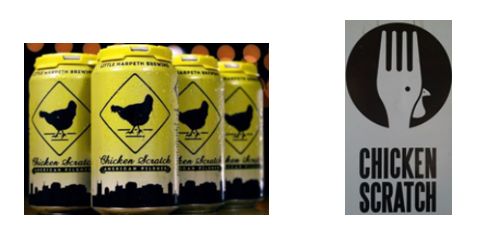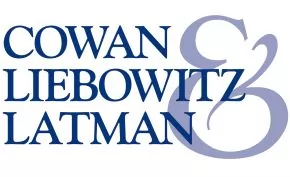Is there a likelihood of confusion between a trademark for beer and the same mark for restaurant services? In some cases, yes; and in other cases, no. It all depends on the evidence. To support a refusal to register a trademark for beer on the ground that there is a likelihood of confusion with the same mark for restaurant services, an Examining Attorney must show "something more" than that restaurants sell beer under the same mark.

We previously wrote about cases in which Examining Attorneys' initial refusals of registrations were reversed on appeal. In those cases, the Applicants' evidence included, among other things, a showing from the Brewers Association's website that the percentage of restaurants that also were taprooms was small, so the same mark—CHRONICLE in one case and BLUE MOON in another case--could be registered for beer and restaurant services by different parties.
A case with a different result—with different evidence—is instructive. The Applicant applied to register CHICKEN SCRATCH for beer claiming use since 2014. The Examining Attorney refused registration citing an incontestable 2015 registration of the identical mark for restaurant services claiming use since 2012. The Applicant appealed the refusal to the Trademark Trial and Appeal Board (TTAB). This time, on appeal, the TTAB affirmed the refusal.
The registered mark CHICKEN SCRATCH for restaurant services was presumed to be inherently distinctive for restaurant services because it had been registered without a claim of acquired distinctiveness.
Strength and Similarity of Marks
Conceptual Strength. The Examining Attorney submitted dictionaries that defined "Chicken Scratch" as "cramped or illegible handwriting." This was an arbitrary meaning as applied to restaurant services. The Applicant argued that the Registrant's mark described a restaurant offering chicken dishes made from scratch so was entitled to only limited protection. The TTAB rejected this argument saying that this meaning would take a long stretch of a consumer's imagination.
The Applicant also cited a co-existing third-party registration of CHICKEN SCRATCH for "distilled spirits, excluding those sold in restaurants." The TTAB said that this single registration fell well short of the volume of evidence found convincing in other cases to limit the scope of the registered mark.
Commercial Strength. As to whether customers had been educated to distinguish between different marks because of minute distinctions between them, the Applicant had not made of record any third-party uses of similar marks and the marks were identical in this case.
Applicant also tried to distinguish its mark by arguing that CHICKEN SCRATCH for beer was a playful reference to ingredients of Applicant's beer that were also used for chicken feed, as distinguished from the Registrant's reference to dishes made from scratch. There was no evidence regarding either meaning, however.
Accordingly, the TTAB held that the similarity between the marks weighed strongly in favor of a finding of likelihood of confusion.
Similarity of Goods/Services and Channels of Trade
Something More. In deciding whether the Examining Attorney had established "something more" to demonstrate that beer and restaurant services are related, the TTAB compared in detail—and distinguished--the record in the factually analogous and binding case of In re Coors Brewing Co., 343 F.3d 1340, 68 USPQ2d 1059 (Fed. Cir. 2003) (no likelihood of confusion for BLUE MOON beer and restaurant services):
|
BLUE MOON Case—likelihood of confusion NOT found |
CHICKEN SCRATCH Case—likelihood of confusion found |
|
Significant differences in wording, design, and coloring elements |
Identical Marks |
|
BLUE MOON used on numerous occasions for restaurant services and in numerous registrations for food and beverages. |
The Applicant presented no evidence to weaken the scope of protection for the CHICKEN SCRATCH registration. |
|
Evidence of the relatively small number of U.S. breweries selling beer and rendering restaurant services (fewer than 1 in 500). |
The Applicant presented no comparative evidence as to the number of breweries selling beer and rendering restaurant services. On the other hand, the Examining Attorney presented evidence of 18 websites of third-party restaurants that serve beer under the same mark and 9 articles and a book discussing the growth of "brewpubs" as a subclass of breweries selling beer and restaurant services under the same mark. |
|
Few registrations of the same mark for both restaurant services and beer. |
The Examining Attorney presented evidence of 21 active, non-duplicative, third-party, use-based registrations for beer and restaurant services. |
The TTAB held that the evidence in this case showed a much closer relationship between beer and restaurant services than the record of In re Coors, decided 20 years earlier. Further, in the CHICKEN SCRATCH case, neither the application nor the registration contained any restrictions on the channels of trade or classes of purchasers, so the TTAB deemed them to overlap.
Therefore, based on the record before it, the TTAB affirmed the refusal of registration.
In re R.S. Lipman Brewing Company, LLC, Application No. 88209633 (T.T.A.B. May 3, 2023.
Author's Note: Each likelihood of confusion case is based on the evidence presented in that case. The amount and quality of the evidence can result in differing decisions as to whether different parties can own coexisting registrations of the same word mark for beer and restaurant services.
At the stage of clearing a new mark for beer, you should proceed cautiously if you find that the same mark is already in use or registered for restaurant services. You should consider whether that mark is strong conceptually and commercially, and whether there is likely to be an overlap in channels of trade and consumers—especially given the growth in the number of brewpubs across the U.S.
If the available evidence does not strongly point one way or the other, it might be prudent to adopt a different beer mark. It can be expensive and time consuming to gather evidence to use in an appeal of an initial refusal of registration, or in defending against an infringement claim, and the result is unpredictable.
Further, once you have adopted a mark for beer, you should consider registering it, and arranging for a watching service to report applications for beer or restaurant marks that you might want to contest based on your prior rights. If you do not do this, you might find yourself barred from registering your mark for beer, and you might even be barred from continuing to use your mark for beer.
The content of this article is intended to provide a general guide to the subject matter. Specialist advice should be sought about your specific circumstances.

